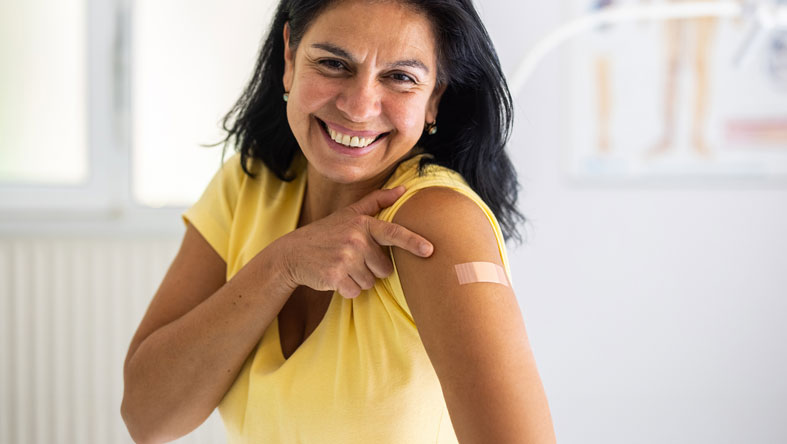50 or older? It may be time for a shingles vaccine, doctors recommend.
Shingles (Herpes Zoster) is a painful skin rash. If you’ve had Chicken Pox at any point in your life, you’re at risk for shingles.
The virus that causes Chicken Pox, varicella zoster virus, remains dormant, or inactive, after Chicken Pox goes away. But it can be reactivated when you get older, and the immune system slows down.
But don’t worry, the shingles vaccine, Shingrix, can help prevent it. To get vaccinated, talk with your doctor or pharmacist. Keep reading for answers to common questions.
What does a shingles rash look like?

If you have shingles, the skin around your stomach and back will be red, and may be painful and itchy.
The rash usually wraps around one side of your torso and can start as red bumps that turn into fluid-filled blisters.
Different things can trigger shingles including certain medication that weakens the immune system (immunosuppressants), emotional stress, exposure to Human immunodeficiency virus (HIV), or cancer.
Is Shingrix the only shingles vaccine?
Yes. Currently, Shingrix is the only vaccine available in the U.S. recommended to help prevent shingles.
Why get vaccinated?
- 1 in 3 individuals will get shingles in their lifetime
- As you get older, your risk is higher of getting shingles with serious health complications
- 1 in 10 individuals who get shingles get long term nerve pain (postherpetic neuralgia)
- In rare cases, getting shingles can cause blindness
Who should get the Shingrix vaccine?
Shingrix is recommended for all adults aged 50 and older, even if you have:
- Previously had shingles
- Previously received Zostavax, a shingles vaccine that’s no longer available in the U.S.
- Or if you’re 19 years or older and are immunodeficient or immunosuppressed.
Immunodeficient or immunosuppressed means your body has a harder time fighting off infections. It can be caused by certain infections (like HIV or AIDS), medications (immunosuppressants), and cancer, among other things. Ask your doctor if you are unsure.
Who should not get the Shingrix vaccine?
You should not get a Shingrix vaccine if you:
- Have had a severe allergic reaction to any component of Shingrix
- Currently have shingles
- Are sick or have a fever
- Are pregnant or think you might be
What to expect when getting the Shingrix vaccine
- Shingrix is a two-dose series that’s given six months apart
- The vaccine is given as a shot into a muscle, typically your arm
- If more than six months have passed, you should get the second dose as soon as possible
Zostavax: What if I already got a different shingles vaccine?
Between 2006 and 2020, a different shingles vaccine called Zostavax was available in the U.S. In some countries, it’s still given.
As of November 18, 2020, Zostavax is no longer available in the United States. It turns out, Zostavax gets less effective over time. So, if you got the Zostavax vaccine, it’s a good idea to be re-vaccinated with Shingrix.
Talk to your doctor or pharmacist to find out what’s best for you.
If you are 50 years or older, now is a good time to consider getting the shingles vaccine to protect your health.
Learn more
Shingles: Should I Get a Vaccine to Prevent Shingles?
Singles symptoms, diagnosis, and treatment

